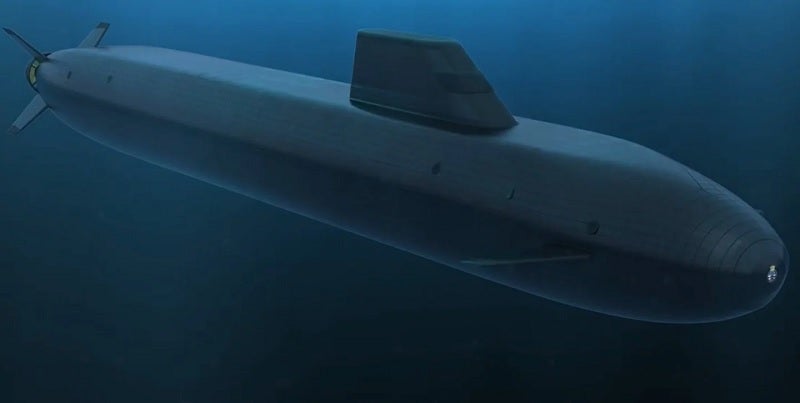
Australia will cut planned key capabilities from the Collins-class diesel electric attack submarine service-life extension (LIFEX) programme, with the intended integration of the Tomahawk cruise missile now no longer going ahead.
Announcing the move on 5 June 2024, the Australian Government said that while the MLU on the six Collins-class submarines will take place, the planned integration of a Tomahawk cruise missile capability and optronics upgrade were to be cut from the programme.
Undertaken by Australian shipbuilding prime ASC, the programme will begin with the LIFEX of HMAS Farncomb and commence in 2026 at Osborne in South Australia.
Providing the reasoning for the decision to cut aspects of the LIFEX, the Australian Government statement that, following advice, the optronics upgrade would have “added complexity and risk” to the programme.
“These decisions will reduce risk for the Collins class programme and will help maximise Collins class availability as we transition to our future nuclear-powered submarine capability,” the statement read.
In addition, the Australian Government received advice from the Ministry of Defence “in consultation with the United States”, that adding Tomahawk cruise missile capability to the Collins-class submarines was deemed to be “not viable” and did not “represent value for money”.
The opportunity to integrate Tomahawk into the Royal Australian Navy’s (RAN) Collins-class submarines appeared to be a natural step as the service prepares for the introduction of the leased US Navy Virginia-class nuclear-powered attack submarines (SSN) in the early 2030s, which will come equipped with the cruise missile as standard.
Tomahawk cruise missiles will also be used by RAN’s Hobart-class destroyers, while Australia has agreed in-principle to fit the Hunter-class frigates with Tomahawks, subject to a feasibility study. The Hunter-class frigates are an adapted variant of the Type 26 anti-submarine warfare frigate being built for the UK Royal Navy, and also selected by Canada under its Future Surface Combatant programme.
“Sustainment of the Collins class submarines continues to meet the [Royal Australian] Navy’s operational requirements and ensures the submarines remain an enduring, potent, and credible capability that is critical to Australia’s national security,” said Pat Conroy, Minister for Defence Industry.
Optronics selected for SSN AUKUS?
A ley aspect to the decision to curtail some of the Collins class LIFEX is the incoming SSN AUKUS nuclear-powered attack submarines, which would “not be fitted” with the specific optronics design due to be installed, the Australian Government statement said.
This indicates some aspects of the SSN AUKUS, which is currently being designed by the UK and heavily derived from its SSNR Astute-class SSN submarine replacement programme, have already been finalised.
In March 2024 it was revealed that the US will provide “advanced technologies” for the in-development SSN AUKUS submarine being developed for use by the UK Royal Navy and RAN, as part of a newly termed “optical pathway” to provide Canberra with a nuclear-powered attack submarine capability.
The disclosure was revealed in a 21 March 2024, joint statement issued by the US, UK, and Australia, which is the triumvirate of nations that make up the AUKUS defence and security organisation. The statement added additional details to the SSN AUKUS programme, including significant investments by Australia into its own and the UK’s submarine enterprise.

However, a key line in the statement revealed that the SSN AUKUS was being “trilaterally” developed, based on the UK SSNR Astute replacement design, but will incorporate “technology from all three nations”, including “cutting edge United States submarine technologies”.
The new SSN AUKUS will replace the in-service Astute-class submarines in the Royal Navy, and Australia’s future Virginia-class boats, which will be acquired from the United States in the coming years.
The UK is expecting to begin replacing its Astute class from the late 2030s, with Australia bringing online its own AUKUS SSNs in the early 2040s.
Australia reduces another naval upgrade programme
Australia also recently initiated a restructure of its surface warfare fleet, reducing the number of Hunter-class frigates it will build from nine down to six hulls, add a new class of light guided missile frigate (FFG) to the service, and initiate an upgrade programme for the Hobart-class air defence destroyers.
In May the long-serving eponymous lead vessel of the RAN’s Anzac-class FFGs had been decommissioned after 28 years in operation in what might be seen as the first major step in the wider restructure of the RAN surface fleet.
Decommissioning HMAS Anzac will pave the way for the long-term investment in enlarging and enhancing the RAN’s fleet, in response to the recommendations made by the Independent Analysis of Navy’s Surface Combatant Fleet, stated the Australian Department of Defence, in an 18 May 2024, release.
With the announcement, it was confirmed that HMAS Anzac would be the first of the Anzac-class FFGs to be retired, followed by its sister ship HMAS Arunta in 2026.
The acquisition of the new general-purpose frigate was to be accelerated to replace the Anzac-class frigates, meaning the ‘Transition Capability Assurance’ upgrades would no longer be required.




